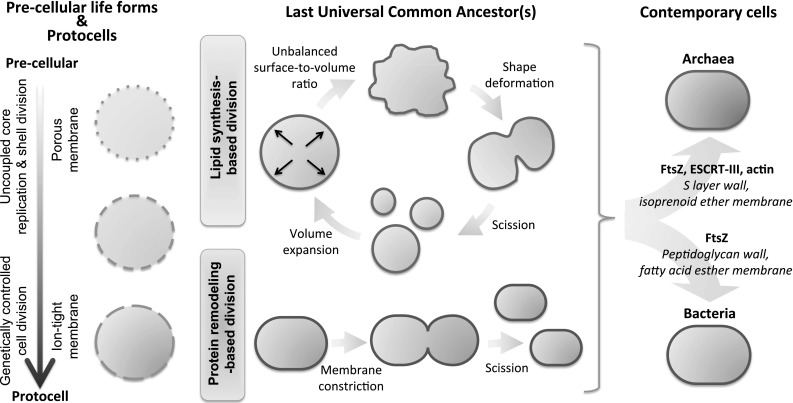Fig. 1.

Possible transition of cell division mechanisms and associated factors from simple lipid vesicles to modern cells. (left) Lipid vesicles have long been acknowledged as a plausible compartment for protocells. The transition from pre-cellular to protocell systems might have been driven by the evolution of the vesicle membrane permeability. In pre-cellular life forms, replication of a genetic polymer and fission of short-lived porous liposomes could have occurred independently. Progression to cellular life with genetic control of growth and division further implies that selective ionic and molecular exchanges across the membrane were established. (middle) The putative LUCA should not necessarily be perceived as one single individual from which any species emanated. Instead, it could be envisaged as a diverse population of primitive cells using lateral gene transfer as an innovation mechanism (Woese 1998). Two main division models of the ancestor(s) have been postulated. One in which shape deformation is mediated by an excess of membrane through lipid biosynthesis (see text for details). This part of the figure is adapted from Mercier et al. (2013). The other is based on membrane constriction at midcell, a process assisted by membrane deforming proteins. (right) Bacteria and archaea have separately evolved as suggested by their distinct protein cell walls, lipidic compositions and division mechanisms
